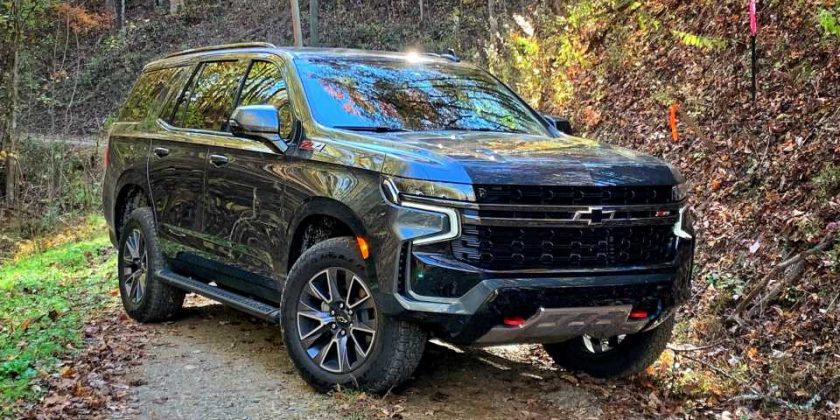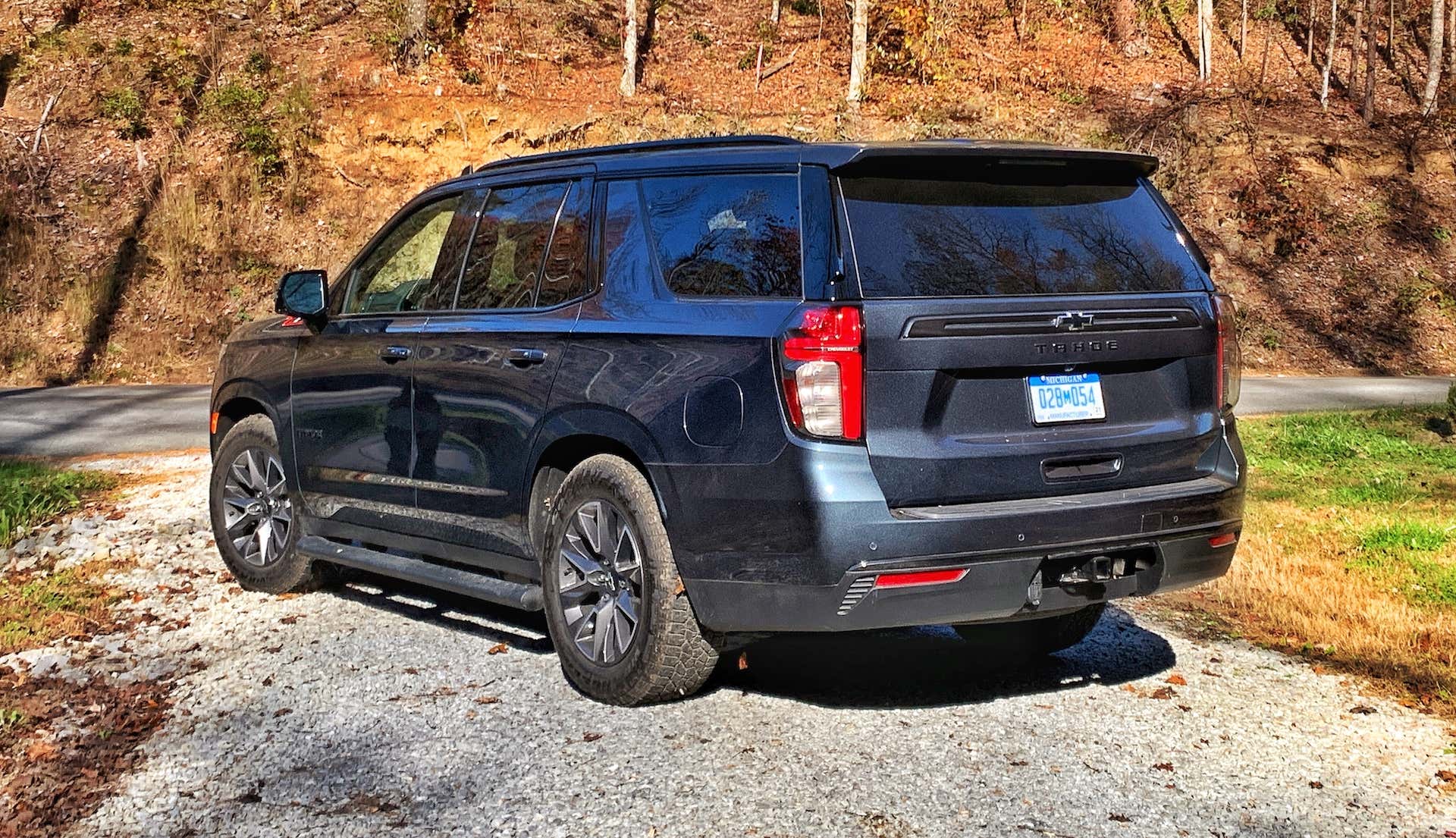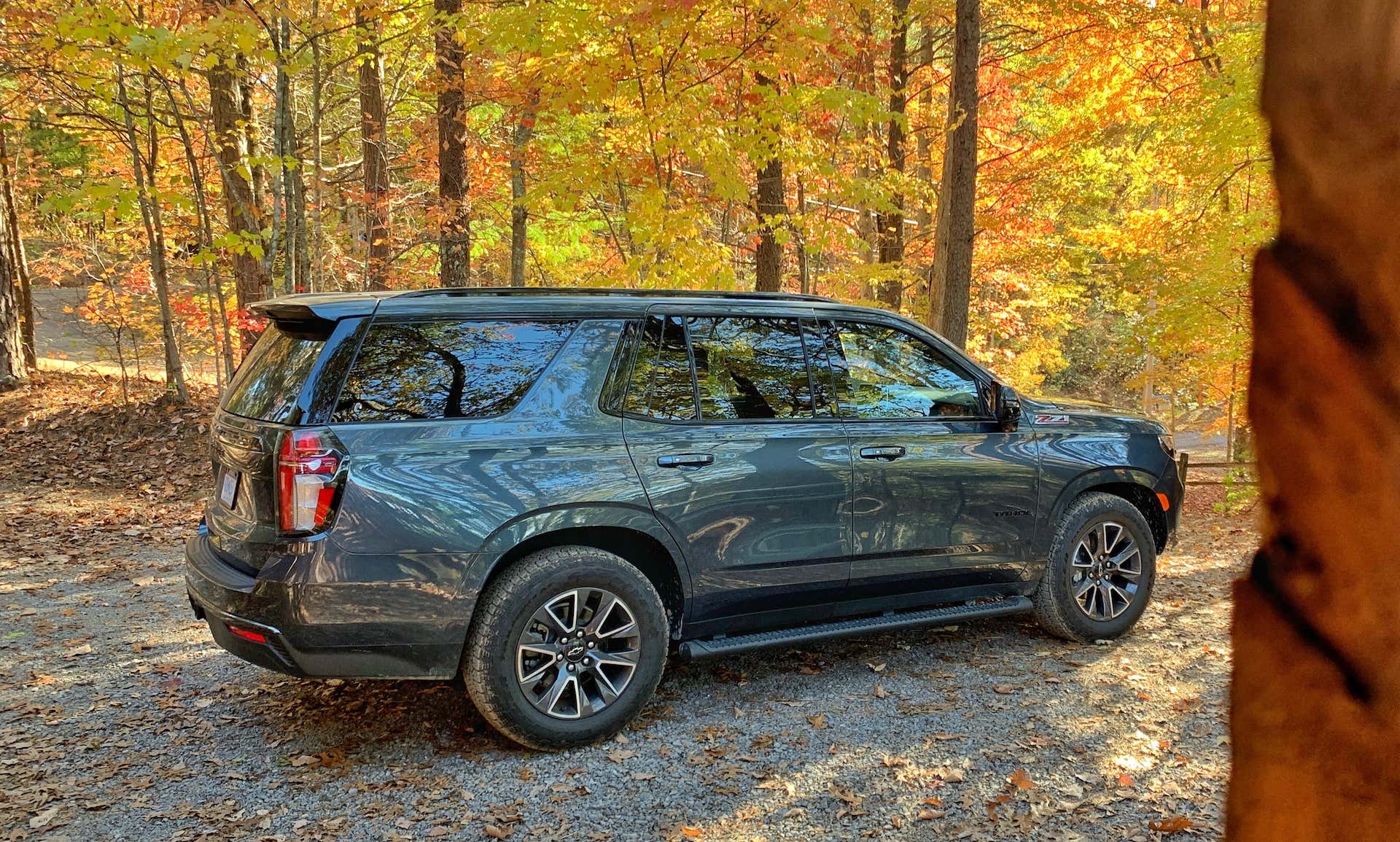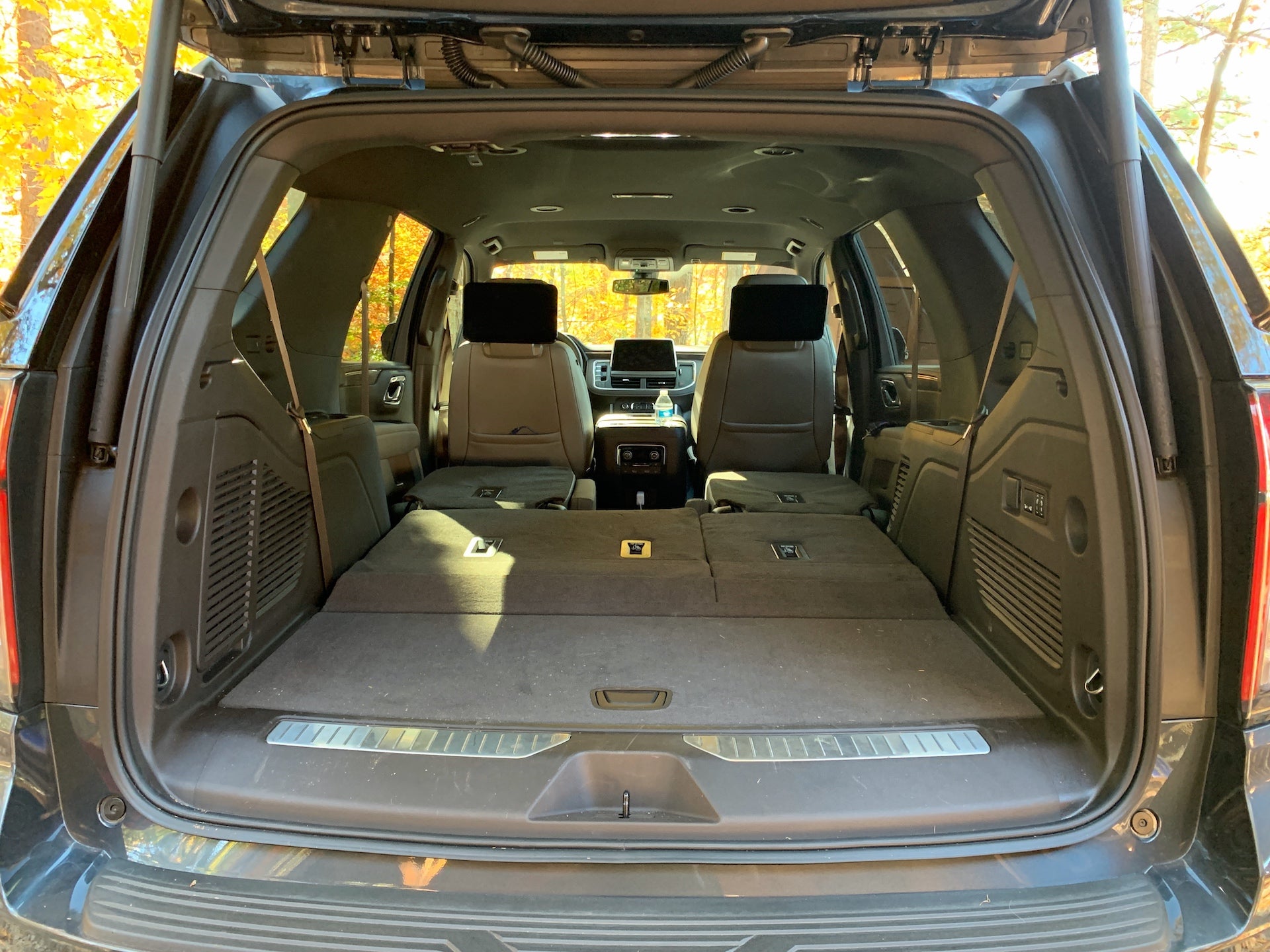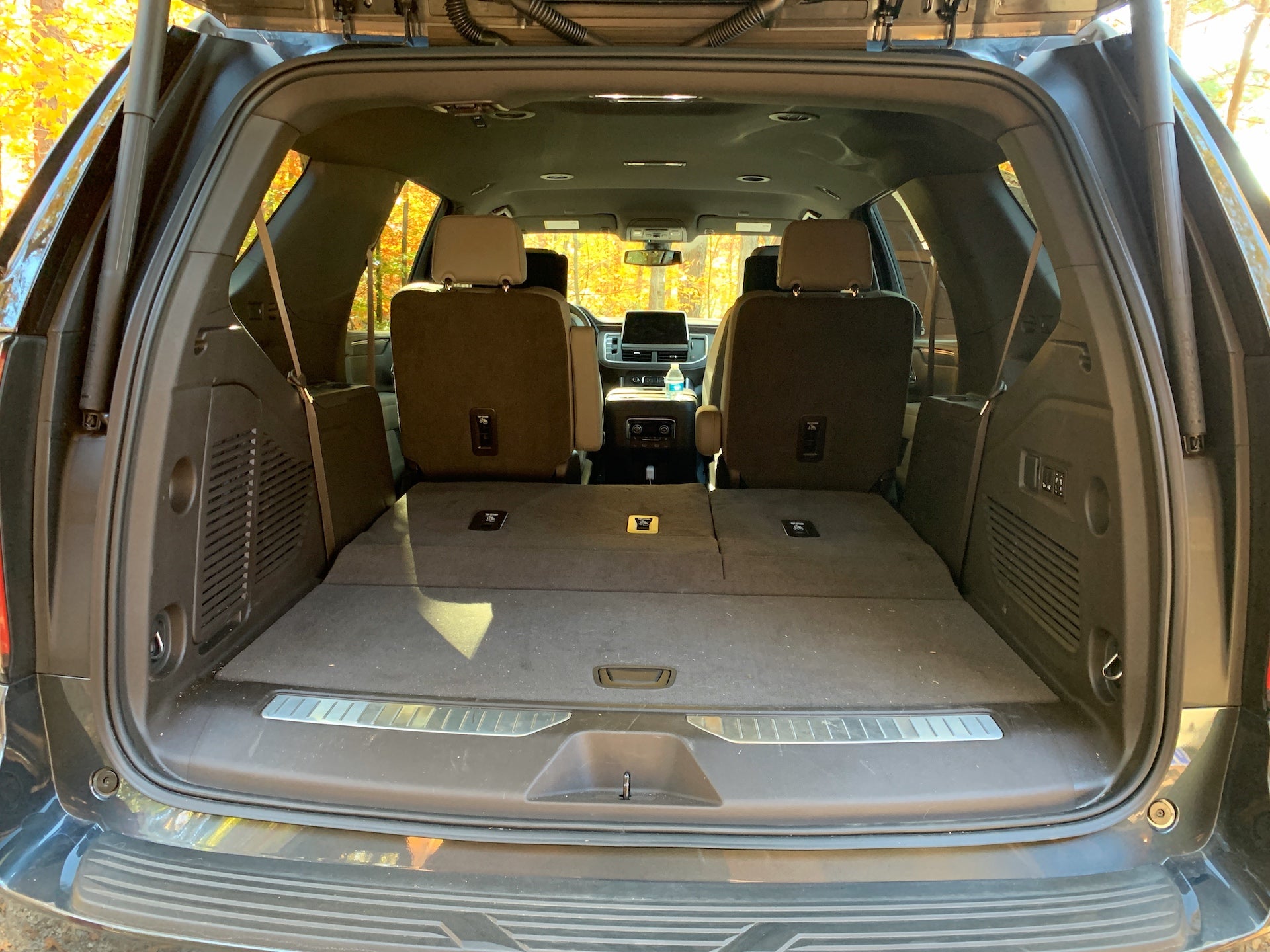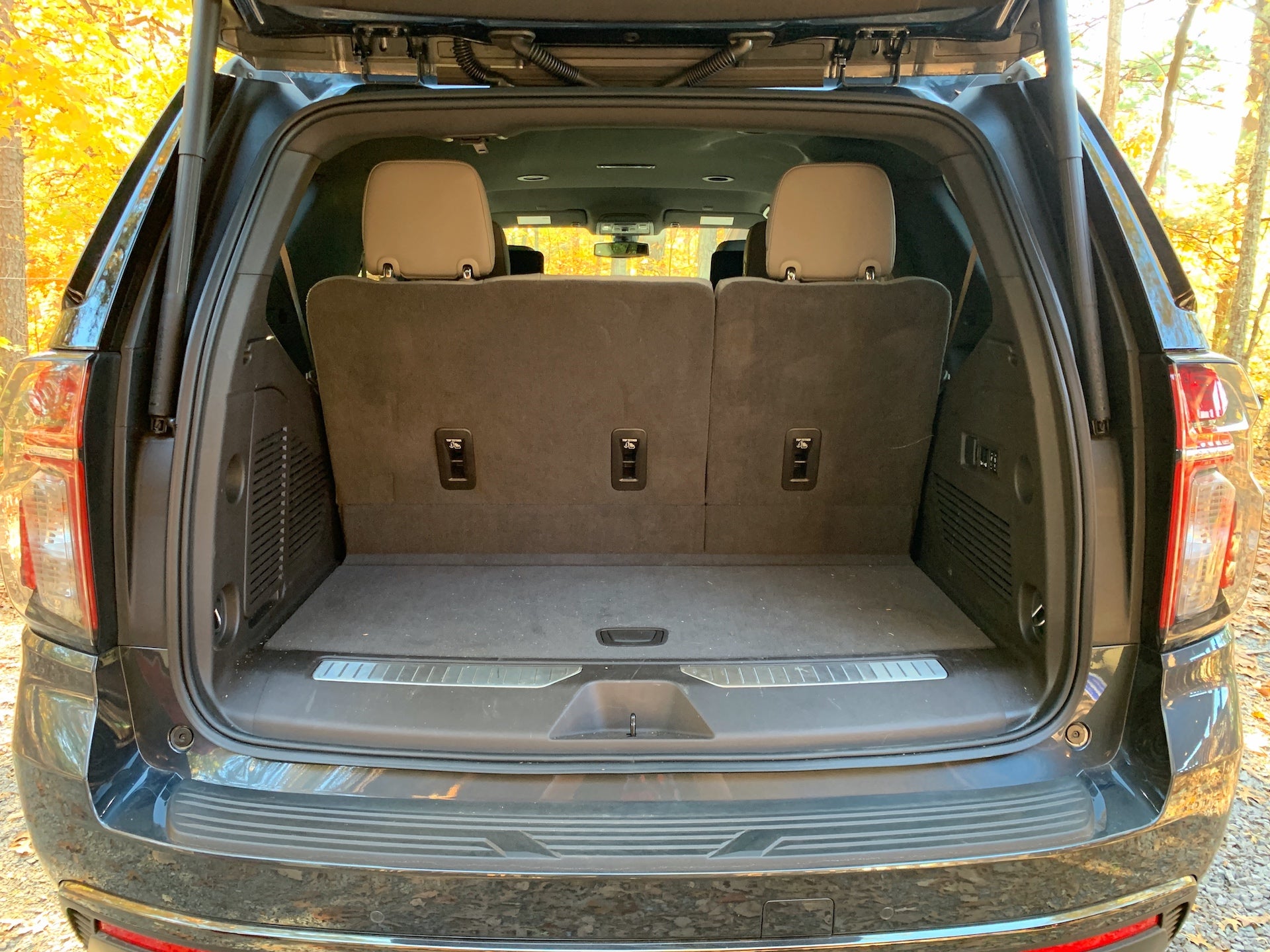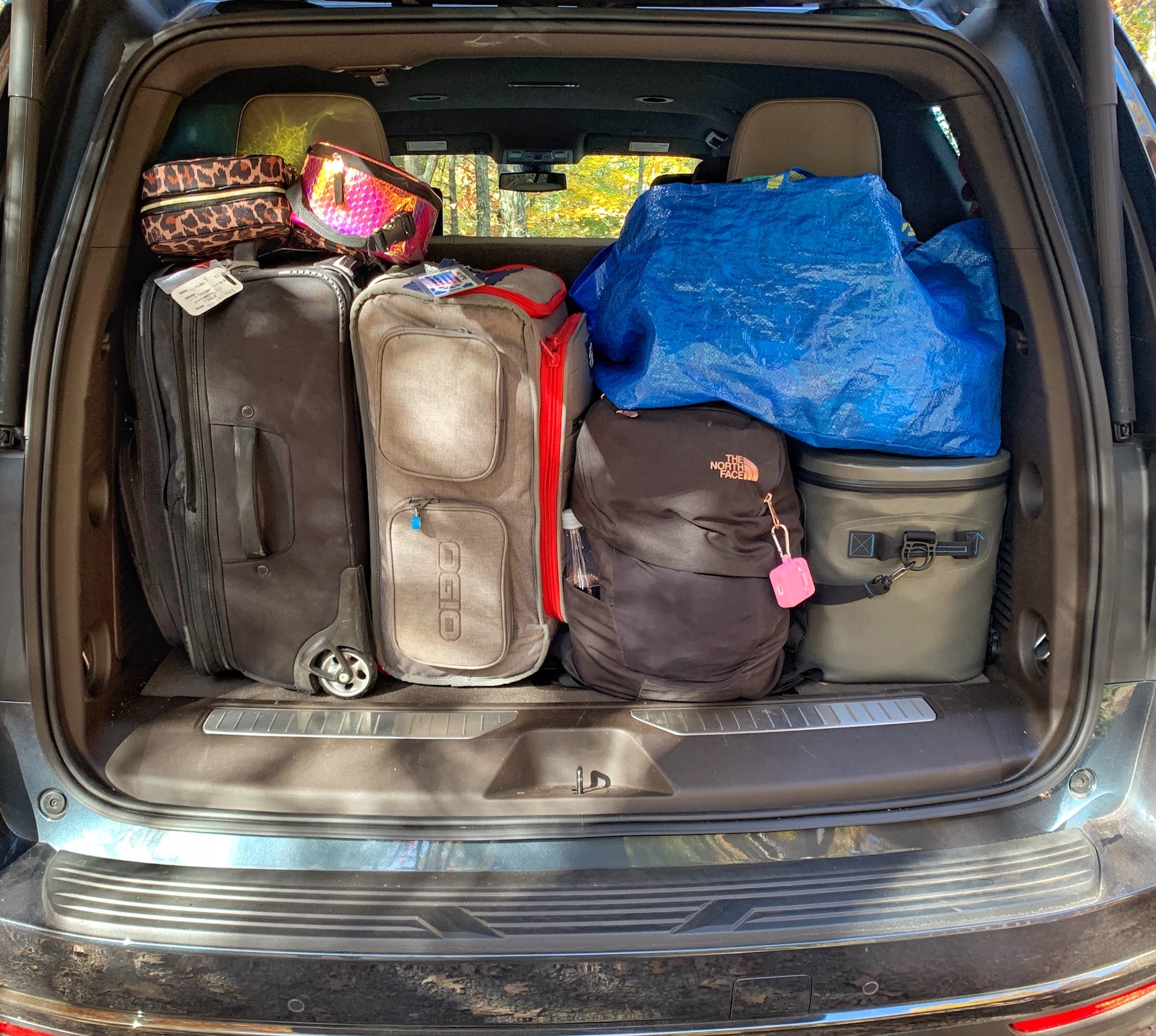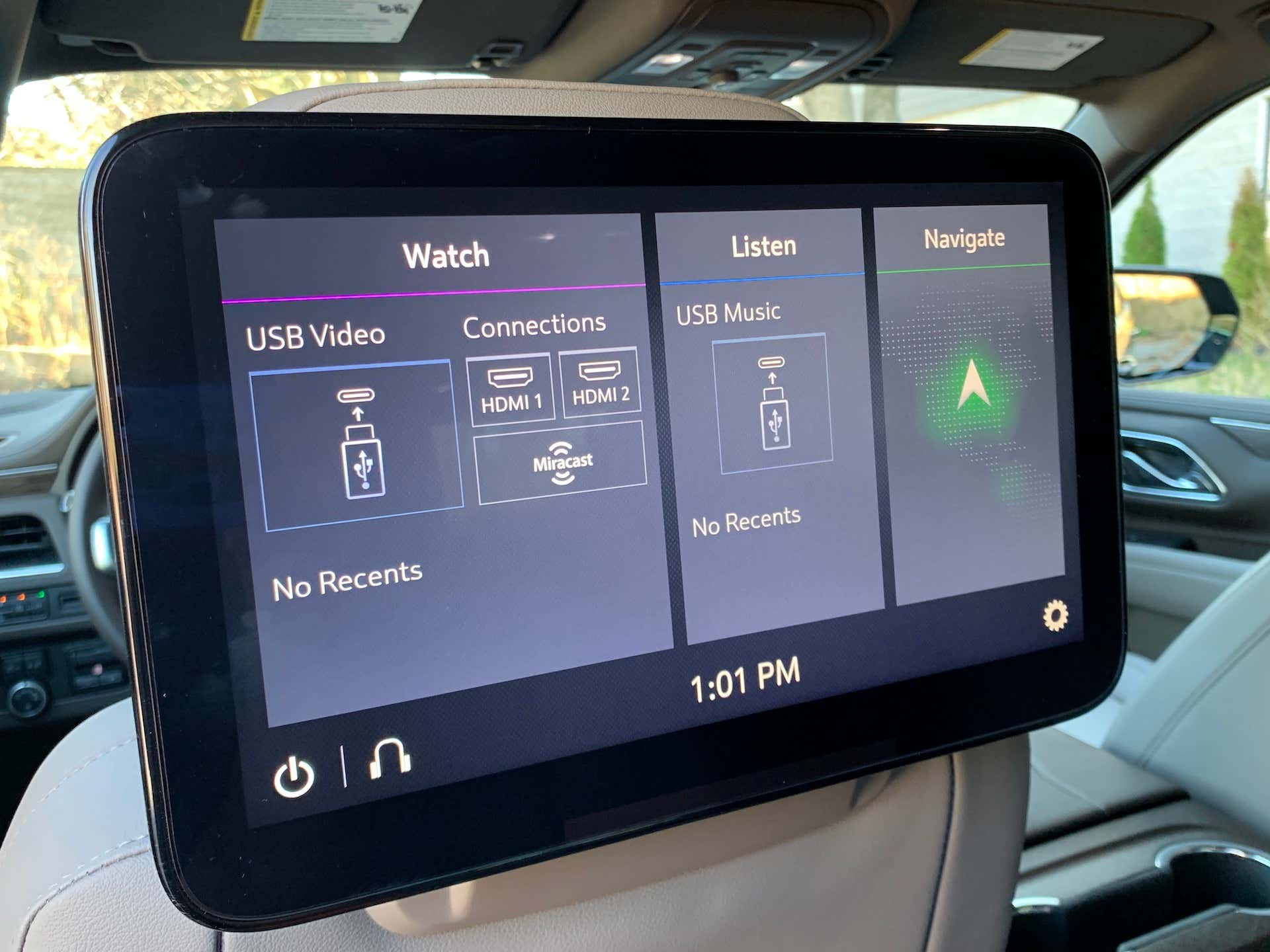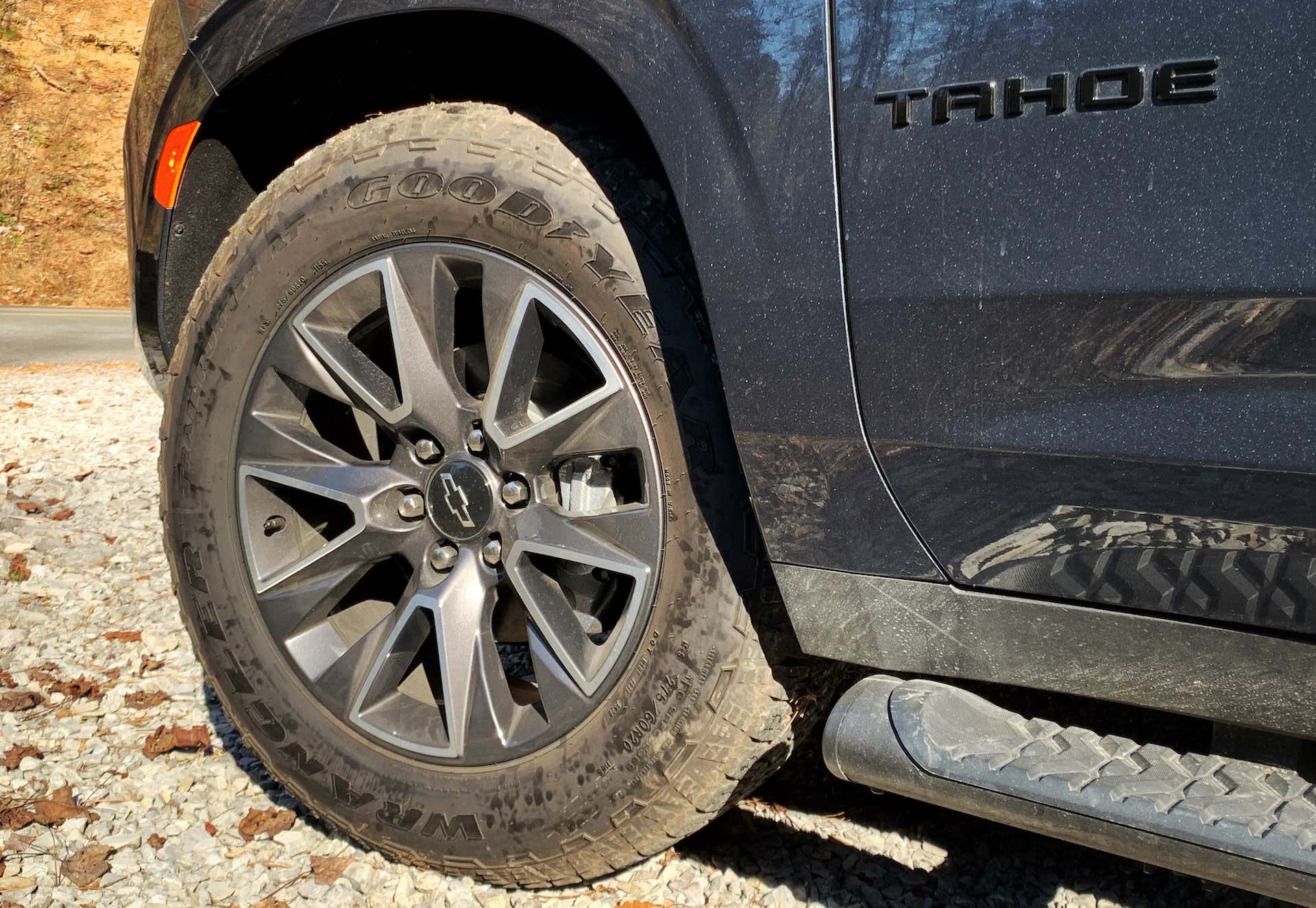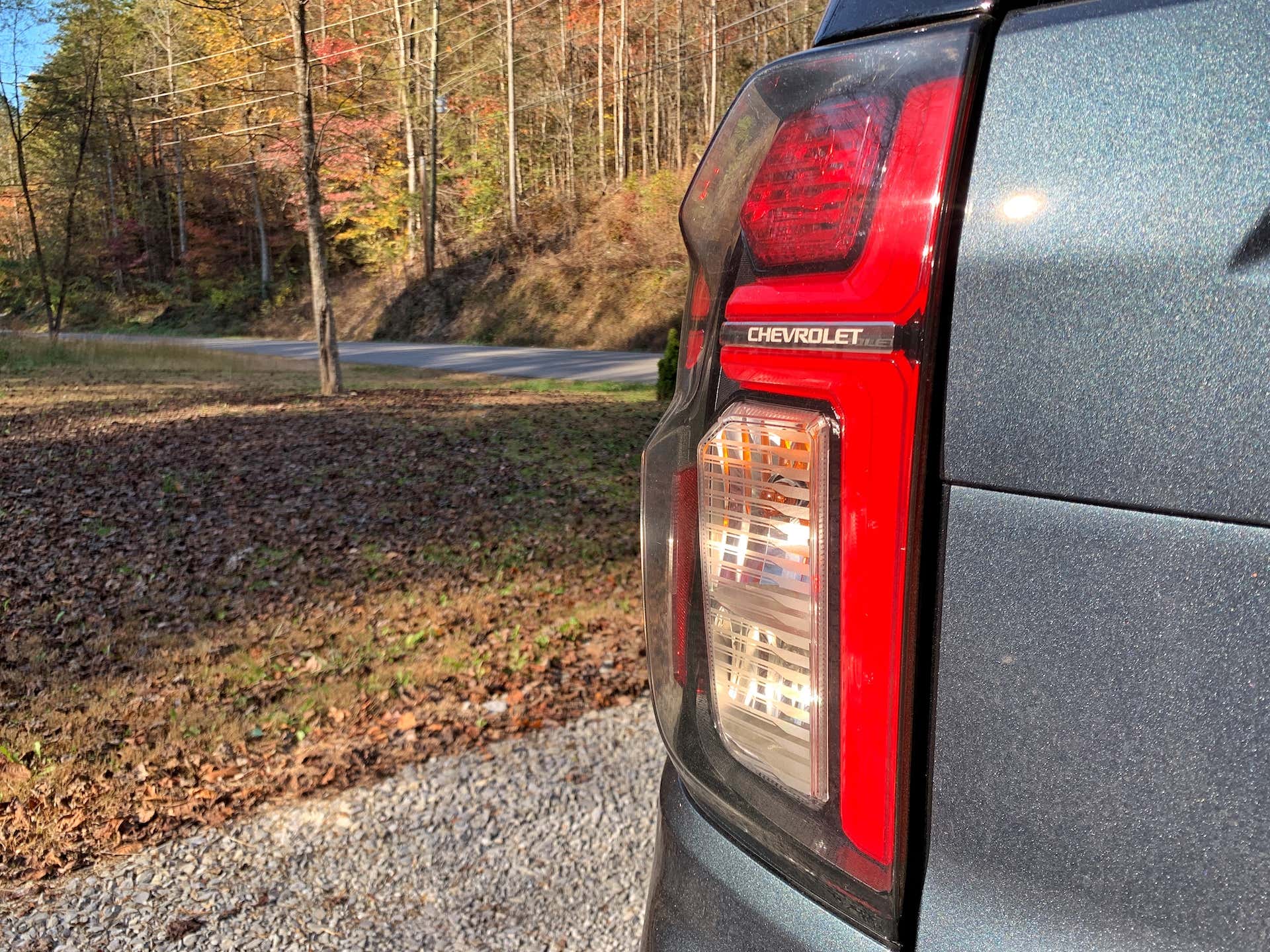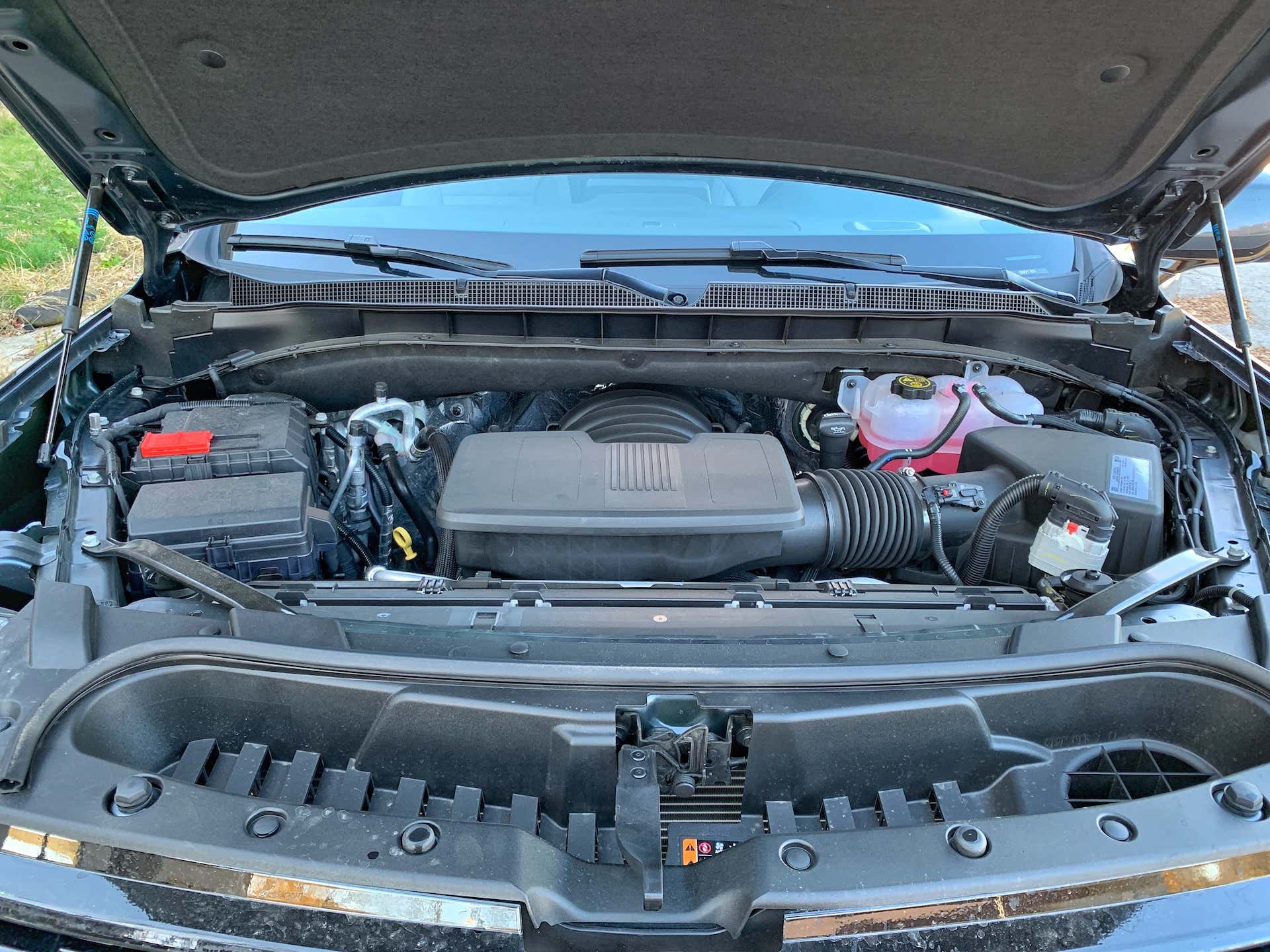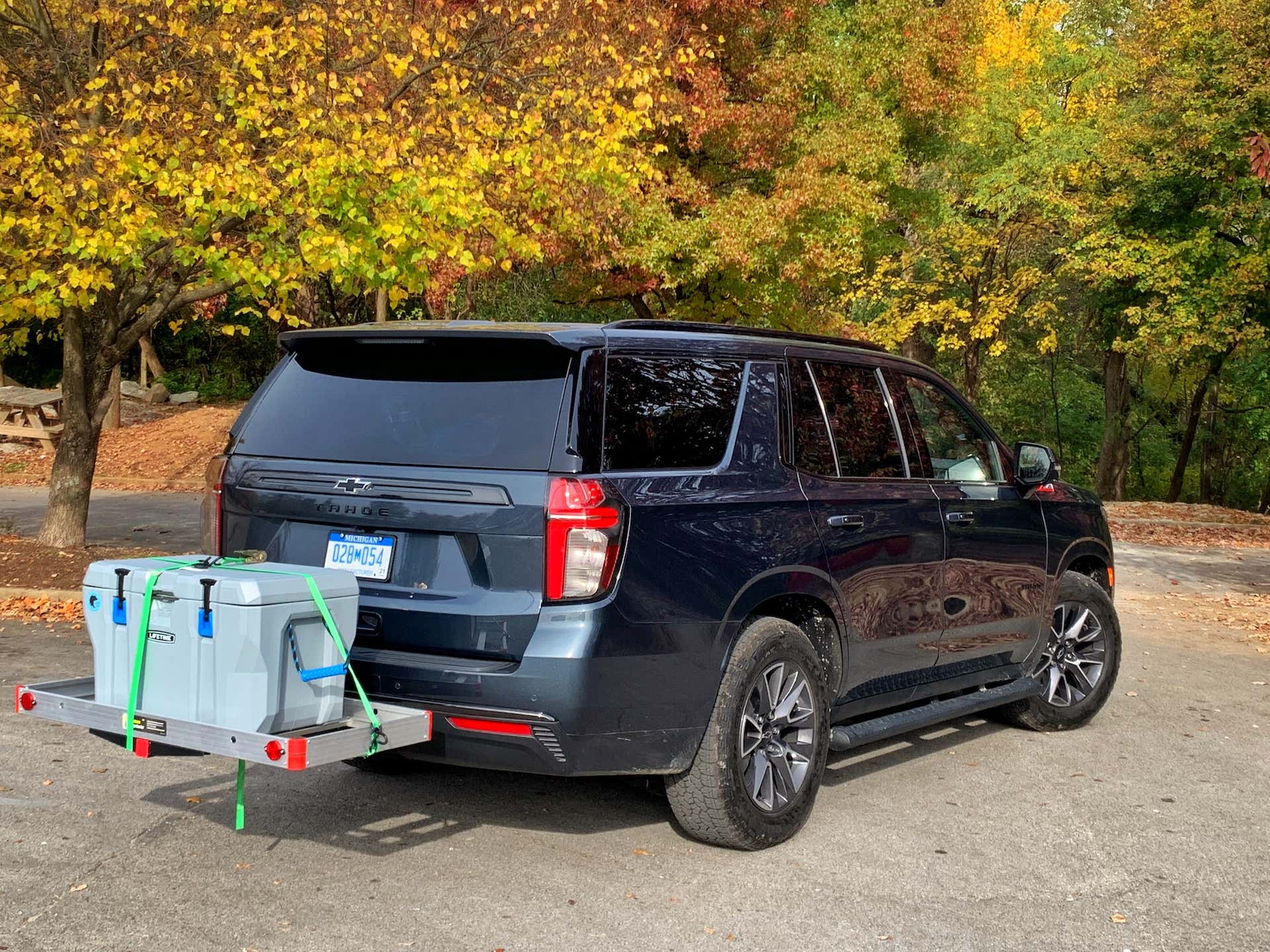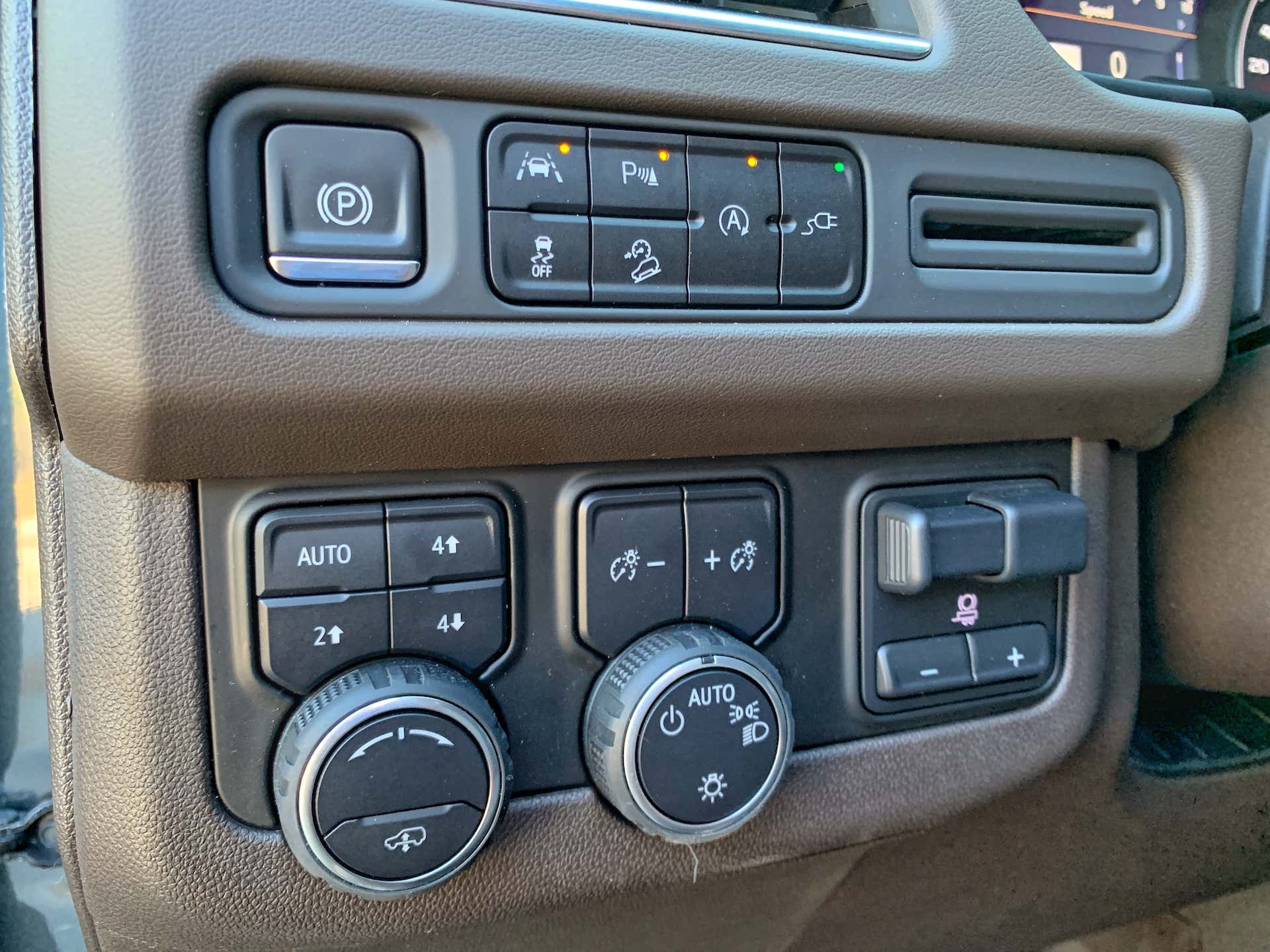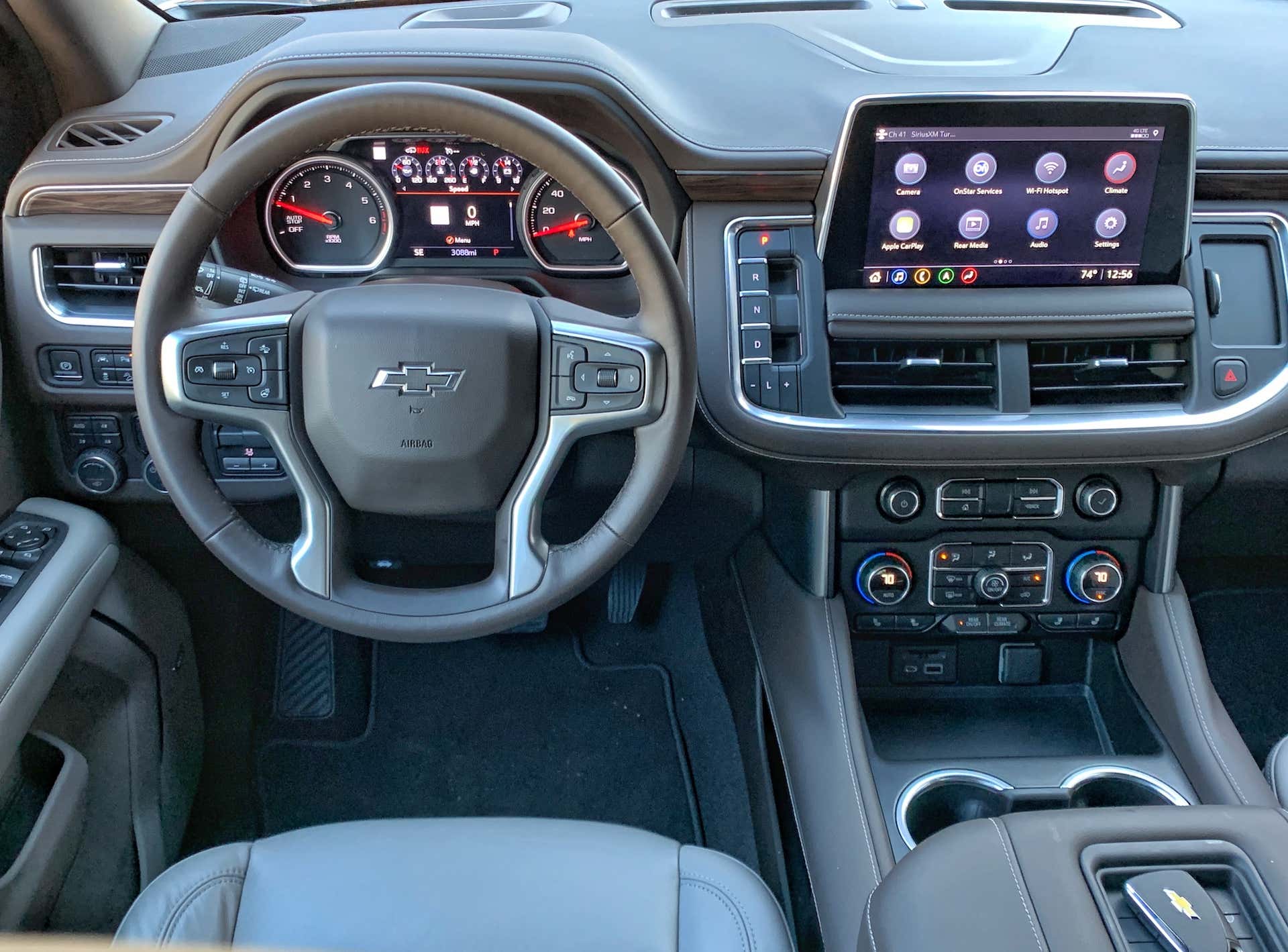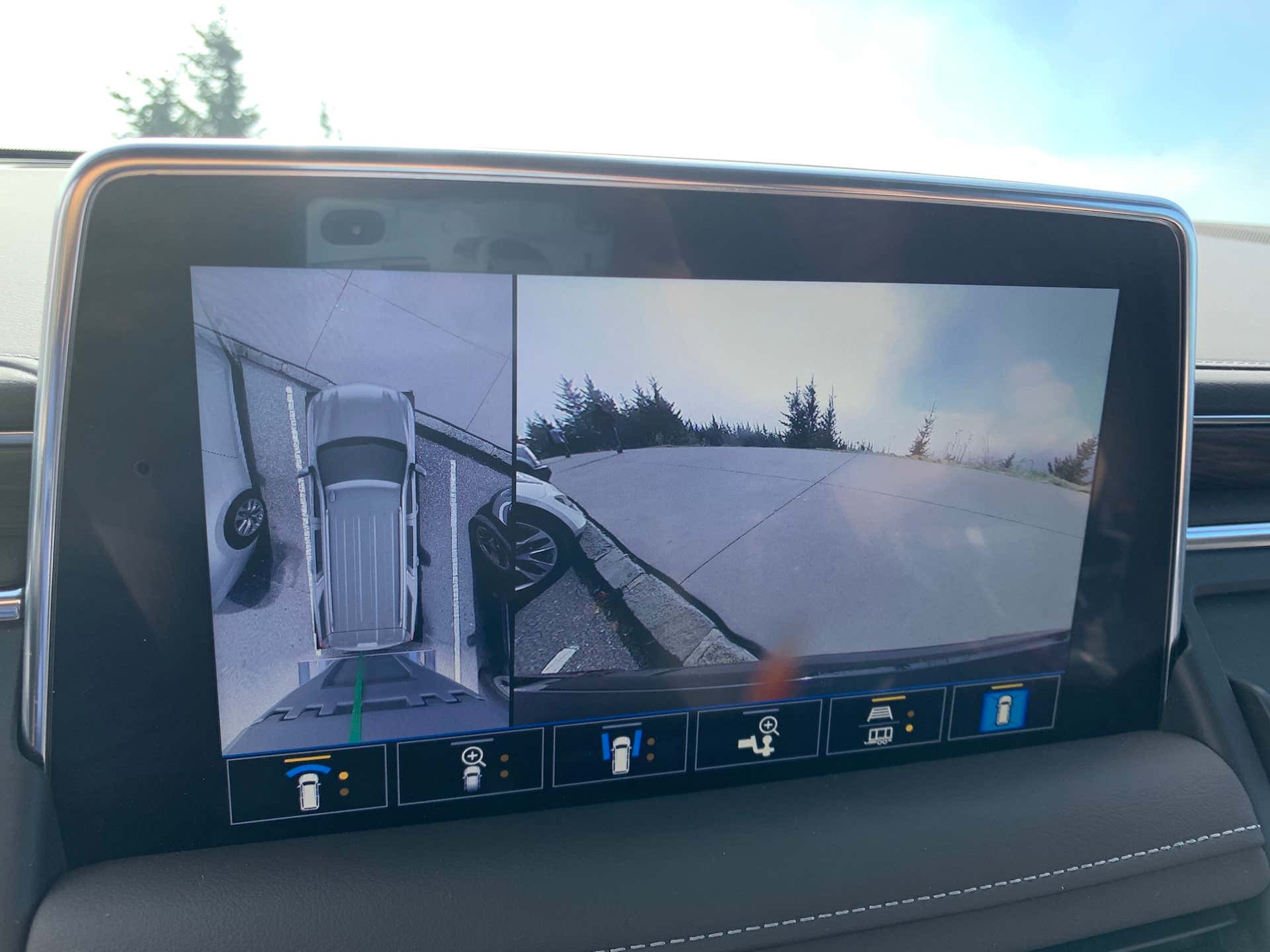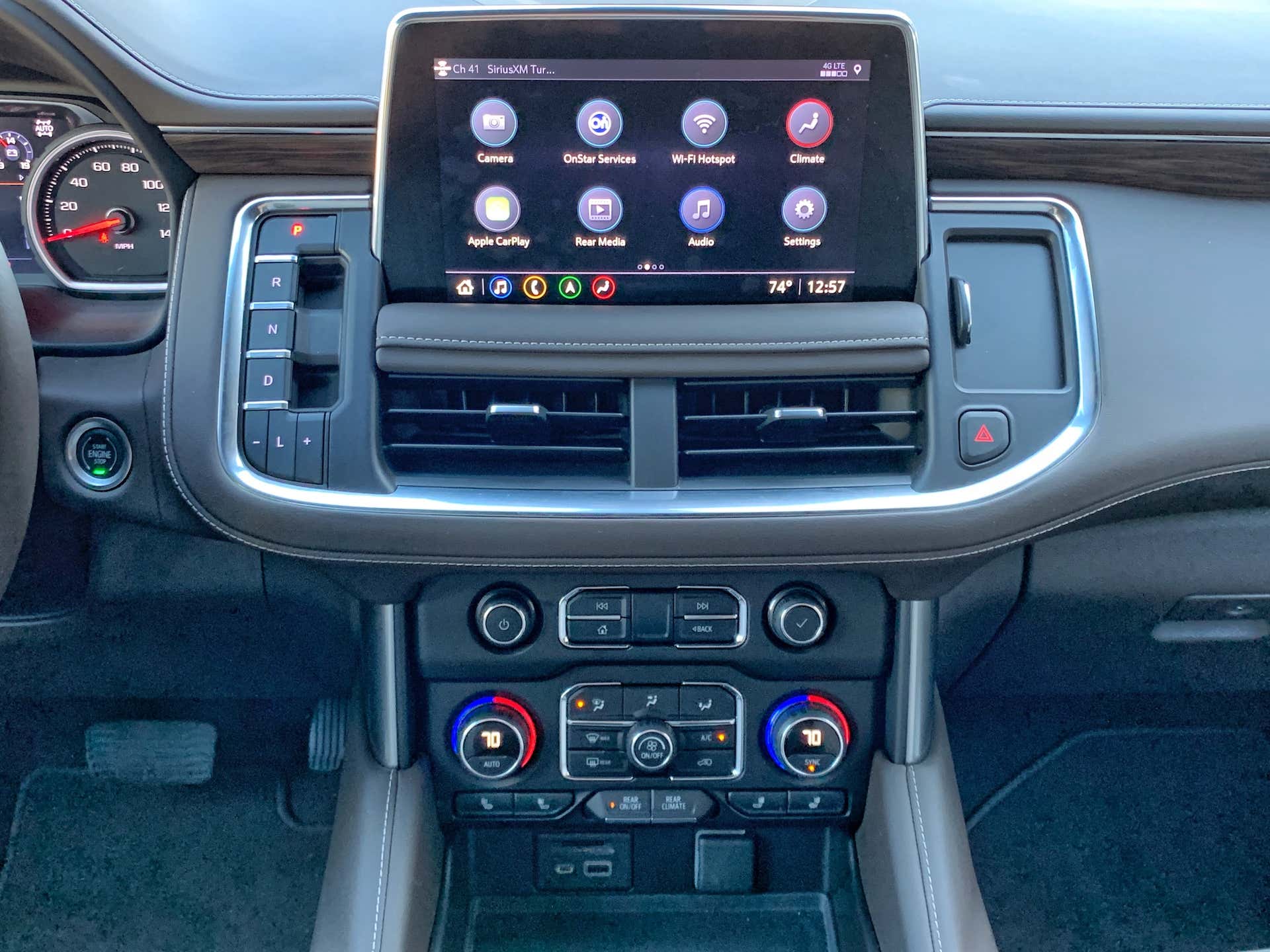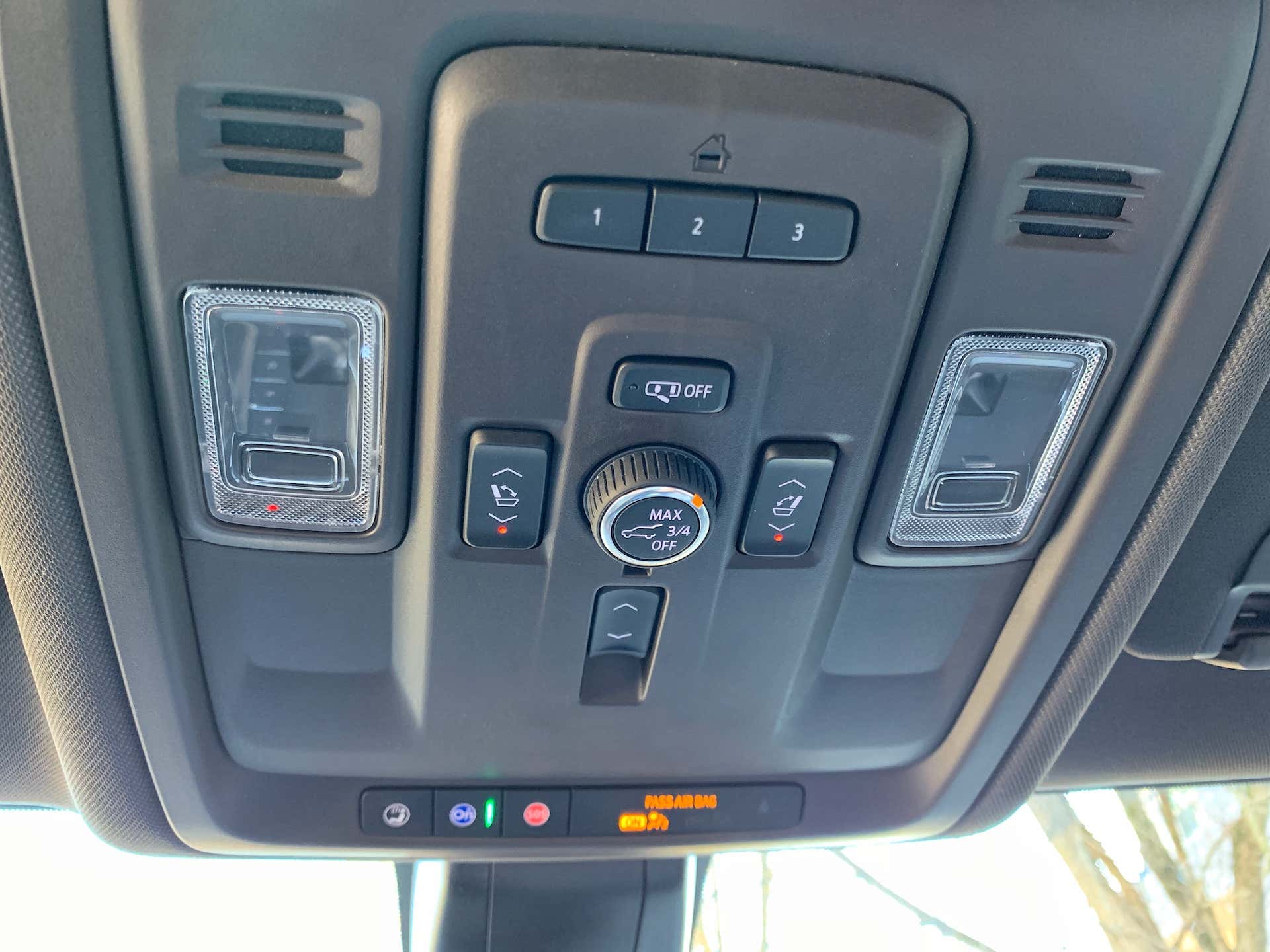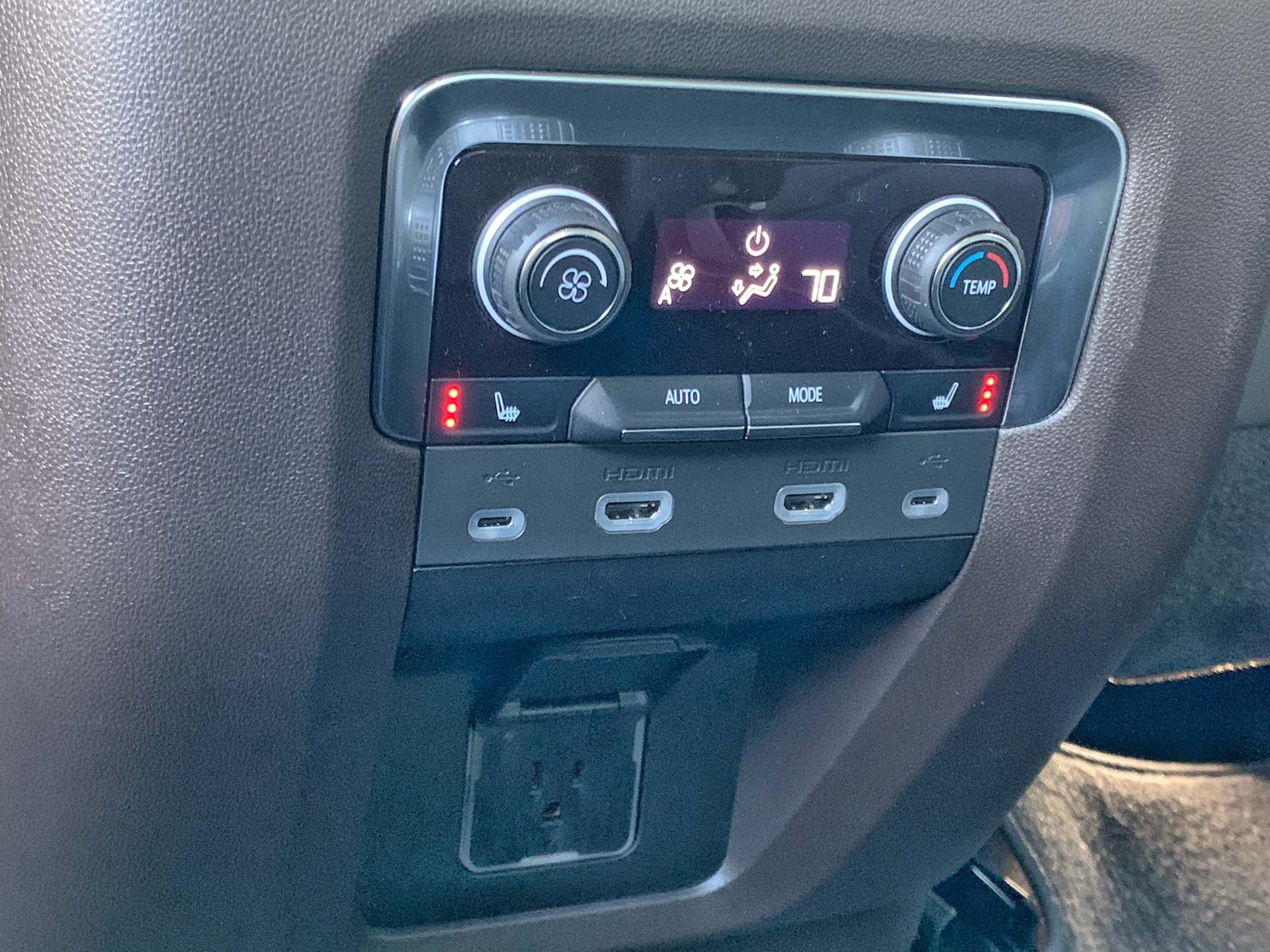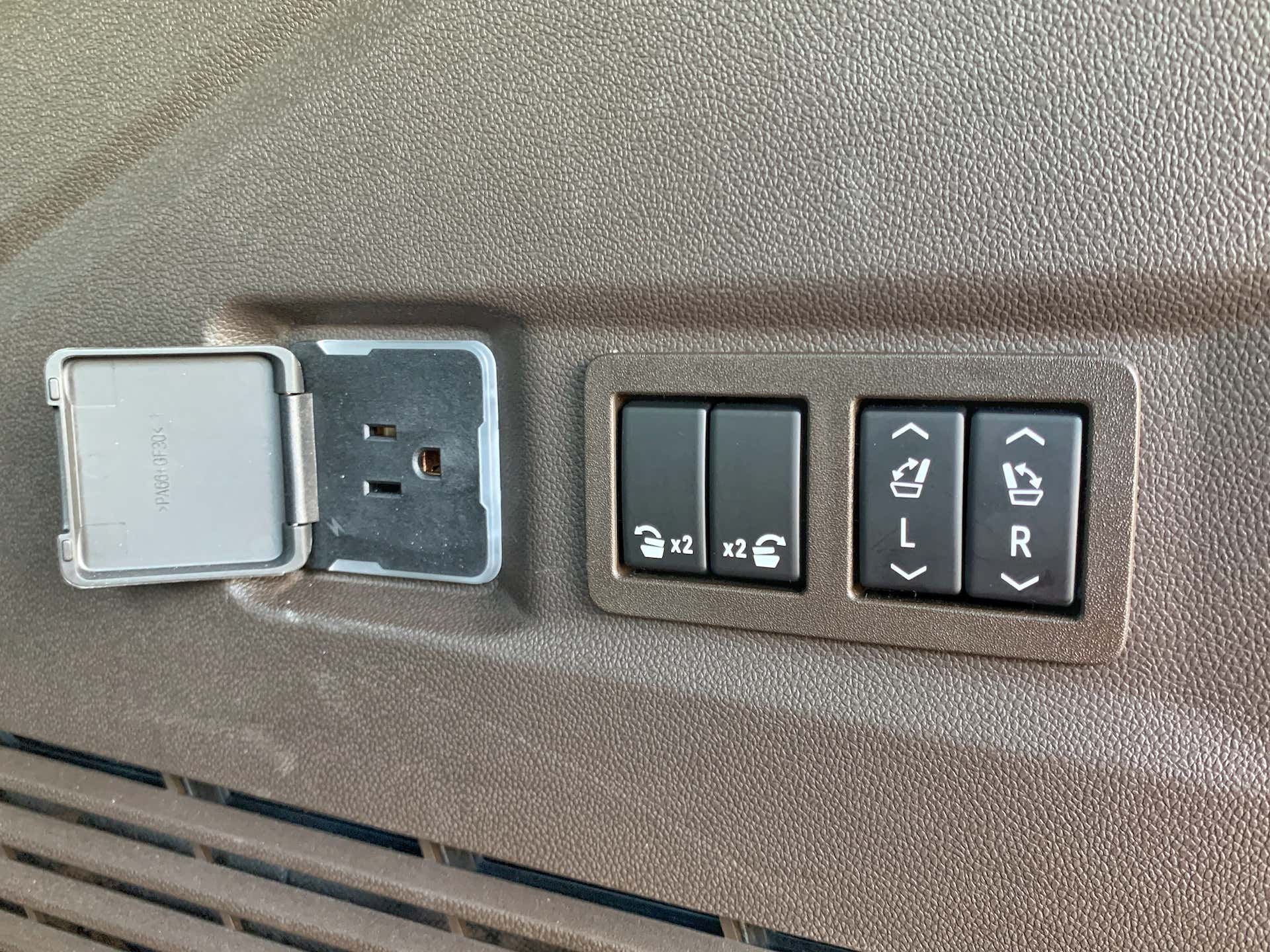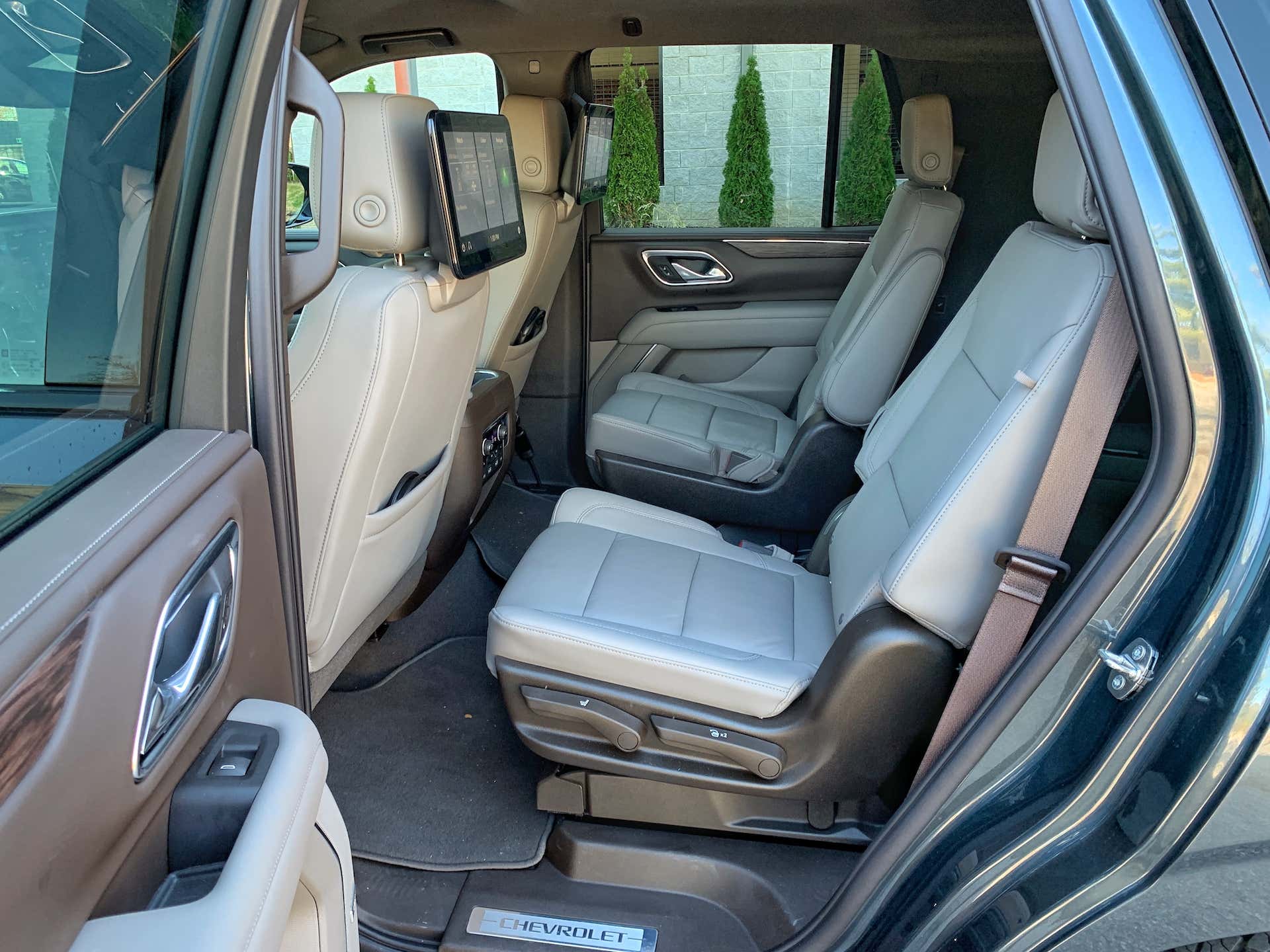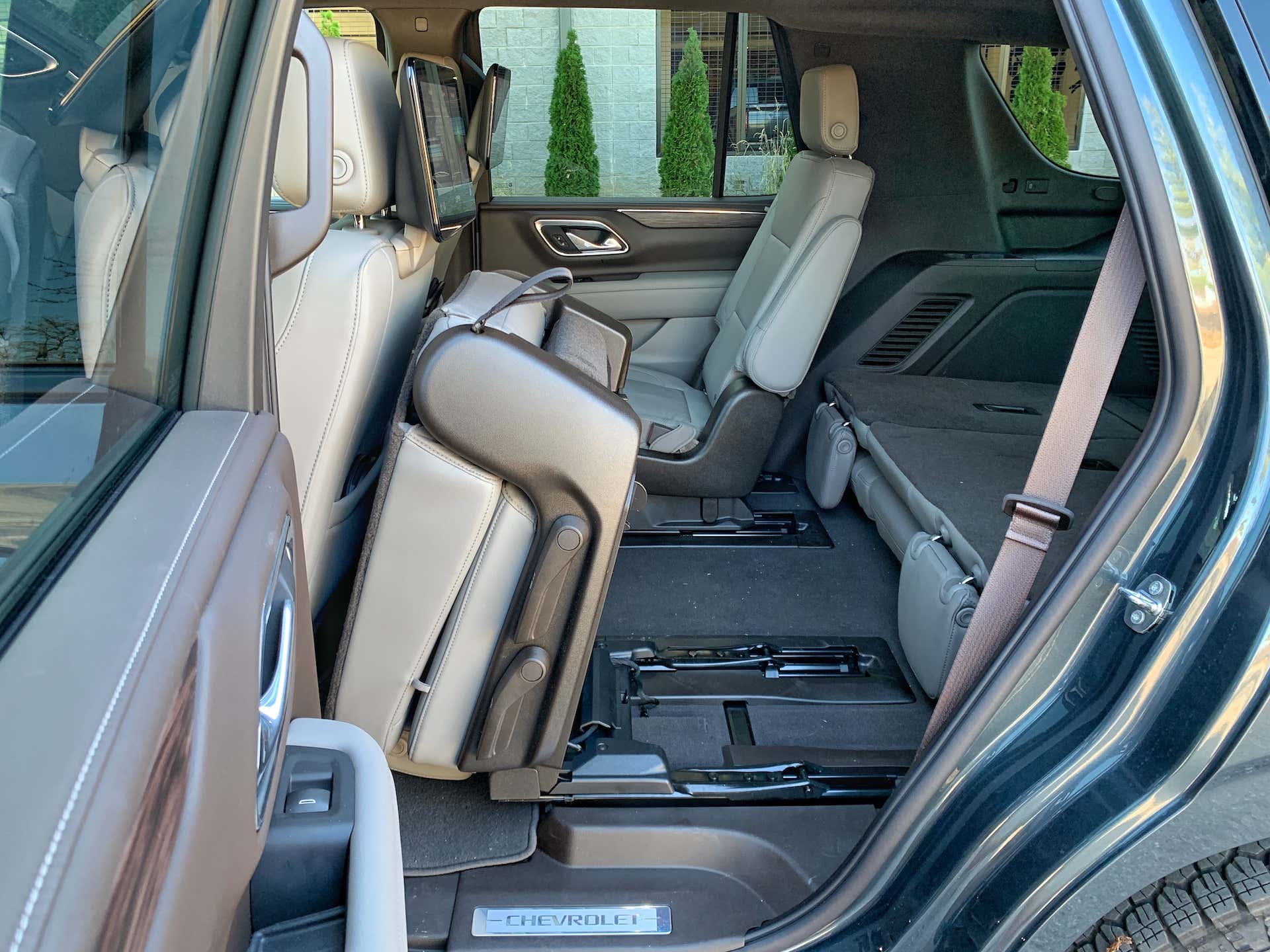Family recipes are sacrosanct. You wouldn’t dare ruin an Italian grandmother’s hearty bolognese sauce with canned junk, or disgrace a southern granny’s fried chicken recipe with gluten-free ingredients. Apply that same concept to a vehicle like the Chevrolet Tahoe, and you can understand why General Motors knows better than to modify Chevrolet’s recipe for large, V8-powered SUVs.
For the last 25 years, the Tahoe has offered millions of Americans the ability to get from Point A to Point B with relative ease, comfort, and status. A recipe sprinkled with hefty pinches of V8 muscle, a tall ride height, cushy seats, and a distinct appearance, have turned it into a staple of the American interstate—sitting right up there with icons like the Ford F-Series and the mechanically related Suburban—which have existed for a heck of a lot longer. And even though the Tahoe may still not have the panache of its GMC and Cadillac siblings it shares components with, it is by no means a lowly peasant anymore.
All-new for 2021, the Chevrolet Tahoe wears the fanciest clothes it’s ever worn, but it isn’t exactly a revolutionary vehicle. It doesn’t really break boundaries with mind-bending technology or performance—heck, it even brought back the diesel engine rather than offer a hybrid variant. It doesn’t look radically different than the outgoing model, either, and it doesn’t make any promises that its predecessor couldn’t fulfill. But there’s a reason for this: if it ain’t broke, don’t (completely) fix it. Just spruce it enough to keep up with the competition and charge more money. And it works.
The last time I was behind the wheel of one of these Bowtie-wearing freedom machines was about three years ago when I did a road trip in a 2017 Tahoe Premier. Said test involved hauling the family and some cargo to a weekend getaway, so what better way to test the new kid on the block than by packing it full of people, luggage, snacks, and getting out town for a few days?
An 800-mile round trip complete with wide-open stretches, steep highways, windy mountain roads, and even beat-up dirt trails would help me explore the new Tahoe’s performance. Inside, four adults and two kids would put all onboard technology and 12 cupholders to the test, just to make sure that the Tahoe is still the top dog of the large family SUV segment. In retrospect, all I really needed to perform a full-fledged test was to attach an 8,000-pound something to its hitch, but I’m saving that for a future story.
Destination: Smoky Mountains National Park.
2021 Chevrolet Tahoe 4WD Z71, By the Numbers
- Base Price (As Tested): $59,200 ($68,940)
- Powertrain: 5.3-liter V8 | 355 horsepower, 383 pound-feet of torque | 10-speed automatic transmission | four-wheel drive
- Max Towing Capacity: 8,200 pounds
- Max Payload Capacity: 1,746 pounds
- EPA Fuel Economy: 16 city | 18 highway | 20 combined
- Cargo Volume: 72.6 cubic feet (25.5 with third row up)
- The Premise: To transport children, businesspeople, or government personnel in the utmost comfort, reliability, and clout—possibly while towing a boat or camper.
- Quick Take: Everything the Tahoe does, it does so effortlessly.
The standard engine in the 2021 Tahoe is a 5.3-liter V8 with 355 horsepower and 383 pound-feet of torque, paired to a 10-speed automatic transmission co-developed by Ford and GM. A 6.2-liter V8 with 420 hp and 460 pound-feet is optional. My tester arrived in Z71 trim, packing the smaller V8, in Shadow Gray Metallic. It sported 20-inch aluminum wheels wrapped in Goodyear Wrangler all-terrain tires, which were supported by magnetic ride control and air ride suspension—all part of the $5,735 Z71 package.
I had just started loading up our gear when it dawned on me that despite Chevy claiming the new Tahoe has 66 percent more interior cargo volume, I didn’t have much trunk space left with the third-row seats up. This wasn’t a complete surprise, but for some reason, I had overlooked it during the planning stages of this trip, which meant I had to go online and order a hitch-mounted cargo rack.
This leads me to the first conclusion of this review—yes, already. If you plan on using your trailer hitch for something cool like a boat or off-road toy and deploy all three rows of seats at the same time, do yourself a favor and buy the longer, more spacious Suburban instead. After all, cargo boxes are a pain.
When it was all said and done, I was able to stash two carry-ons, two backpacks, a small cooler, and a couple of other loose items behind the third row. On the external cargo tray itself, I strapped our 250-pound cooler fully loaded with provisions and ice. For obvious reasons, we were bringing our own food and drinks for multiple days so we didn’t have to leave our cabin and expose ourselves and others at restaurants, grocery stores, etc.
Next, it was my fatherly duty to figure out how to use the $2,490 rear-seat media and navigation package included in my test vehicle before hitting the road. If you have kids and you’ve used these systems, you know that there’s nothing more frustrating than explaining to a child how to load a movie or game, or how to pair the wireless headphones while driving.
Right off the bat, I was puzzled about where these fancy 12.6-inch screens got their content from? I looked for a Blu-Ray or DVD player on the floor, in the front center console, everywhere, and I couldn’t find one. After some online research, I realized that despite its hefty price tag, this package only included dual screens, two wireless headphones, dual HDMI inputs, and a household-style power outlet, but no actual player of any kind. That, you have to provide yourself.
Hit the Road
It didn’t take many miles to feel the changes ushered in by the all-new chassis. Unlike in previous generations, the new Tahoe feels like a one-piece package. A vehicle in which its chassis, powertrain, and all other major components work in unison. Previously, it always seemed like each component was doing its own thing, but not this time.
On the highway, the Tahoe exudes confidence thanks to its longer wheelbase and adaptive suspension. On the long and sweeping turns of the Kentucky/Tennessee border, most of which are either up or downhill, the Tahoe felt secure cruising at 85 mph while fully loaded. Even when some corners pushed all that weight to the left and to the right, it stayed planted with acceptable amounts of body roll.
The steering system isn’t the most communicative you’ll find on an SUV, but for this kind of application, it works. I’d dare say that more resistance would make it tiring on long hauls. Plus, if you want more of everything, engage Sport mode (on a Tahoe Z71, I know…) and get your arm workout via a weighted steering wheel. It’s worth mentioning that on Sport mode, the suspension stiffens up and drops a full two inches for sportier driving.
Interestingly enough, and possibly for the first time, I feel compelled to praise the pedal feel in a large SUV. Chevy absolutely nails the level of resistance in both the throttle and brake and they play a big part in the Tahoe’s overall driving dynamics. The brake pedal is soft and cushy, yet offers enough bite and reassurance along the way so you don’t feel surprised when the calipers finally bite.
On the other hand, the throttle is well-calibrated; always offering just enough delay for a comfortable ride without feeling sluggish or making the ride jumpy for the passengers. Because, let’s not forget, a vehicle like this isn’t about the driver, but about the folks in the second and third rows. The smoother the better.
The Tahoe does a great job at utilizing its 355 ponies, but I’d be lying if I said it feels strong on the highway. It doesn’t feel underpowered, per se, but it doesn’t have that punch once it’s cruising at 75+ mph. Considering I wasn’t towing, I’d be curious to experience a loaded-up Tahoe plus an 8,000-pound camper (max. towing capacity is 8,200) with the same 5.3 engine. Chances are I’d be left hoping for a 6.2 under the hood instead.
One place where it wasn’t about power but all about traction was the mountain road that led up to our cabin. Covered in gravel and dirt rather than pavement, it required four-wheel high to navigate the steep inclines and tight turns without causing too much of a ruckus, though sadly I never had a real excuse to set the air suspension to Off-Road mode and raise it by two inches.
Could the Tahoe have done it in two-wheel-drive? Yeah, sure, but I probably would’ve kicked up too much dirt and made too much of a spectacle in an otherwise peaceful area. Plus, it was a great test for the drivetrain and Goodyear tires, which didn’t skip a beat.
Technology
I eventually got over my beef with the pricey rear-seat entertainment package not offering more than a couple of screens, and hooked up the Nintendo Switch so the kids could battle each other in Mario Kart. On a more positive note, these same screens could be used by the kids to poke around their own GPS navigation system, and once they’d found something, say, like a Chick-Fil-A, they could send the location to my screen so I could hit “accept” and re-route us there. Spoiled brats.
Sadly, that wasn’t the only shocker.
At nearly $70,000, I was extremely disappointed to do without adaptive cruise control. You know, that thing even economy cars have nowadays? The lack of adaptive cruise, a heads-up display, and sunroof at this price point felt criminal. In order to get those, one must upgrade to the Premier trim that starts $6,400 higher, plus check the box for the $4,485 Premium Package that includes max trailering, panoramic power sunroof, and adaptive cruise control.
The rest of the in-cabin tech was a welcome addition and worked as expected, with wireless Apple CarPlay (and Android Auto) and wireless charging stealing the limelight during our road trip. It’s just convenient to have your phone charging while mirroring on the 10.2-inch infotainment screen without the mess of charging cables. The 8.0-inch digital gauge cluster is nice, too, along with the crystal-clear rearview and surround-view cameras (with trailer hitch assist), which solidly bring the Tahoe into the year 2021.
Family Friendliness
Due to having captain chairs in the second row, my tester came in a seven-passenger seating configuration, rather than eight. Replace the chairs with a bench, and you can easily and comfortably stuff eight folks in the Tahoe, which leads me to my next point: passenger comfort.
Chevy claims to have added an additional 10 inches of legroom for third-row passengers, and I believe it. Previously, the last row was merely for kids—and young ones at that. Now, two adults can comfortably sit for a multi-hour ride without feeling cramped. This is nice for families who actually use the third-row seats on a daily basis, rather than those who only use them for the occasional family/friend visit.
Access to the third row, too, is better than before, with the captain chairs springing forward at the pull of a lever, freeing up about a two-foot-wide path to climb into the back of the Tahoe. The mechanism is still a bit hard to trigger so little kids might not be able to do it themselves (maybe it gets easier with usage), but the ease of access—which in this kind of vehicle is quite important—is very very good.
The Tahoe has enough cubbies, charging ports, and cupholders to withstand a family road trip with ease, so long as the kiddos bring their own movie disc player or gaming console. Lastly, while there are several traditional USB-style power outlets in the first row, all outlets in the back were strictly USB-C, so plan accordingly.
Verdict
When it comes to the competition, the new-gen Tahoe is pretty much in a league of its own, where only its mechanical siblings (GMC/Cadillac) can theoretically pick up the baton and take it even higher—I say theoretically because I haven’t driven the Yukon nor Escalade. The current-gen Ford Expedition is already at the end of its life cycle, and quite honestly, it doesn’t measure up to the new Tahoe. The Dodge Durango, especially in its new spicy Hellcat trim, is also a prime-time road-trip machine, but it’s not as multi-faceted or practical as the Chevy. And yes, all of them will set you back at least $60,000 to $80,000.
If you’re trying to provide your family with a similar experience for less coin, SUVs and minivans like the new Toyota Highlander and Sienna, or the Chrysler Pacifica Hybrid are also excellent choices, but you’ll lose out big time in towing capacity and off-road capabilities.
In the end, it’s hard to fault the Tahoe for its minor shortcomings in the tech department—all of which can be fixed by ponying up cash for optional equipment or higher trims—especially when the driving experience and overall performance is just so darn good.
On our way back home we decided to stop at a few different areas of the national park before pointing the Bowtie north. As a result, we spent 12 hours in the car compared to just eight on the way down. Quite surprisingly, however, was the fact that no one felt the least bit tired, and we had the excellent combination of damn-fine seats, soft steering, great visibility, flawless climate system, and smooth-riding suspension for that.
The harmony of it all had made a long day in the car feel effortless. There’s no doubt that GM hasn’t messed with Chevy’s recipe for the Tahoe, and I doubt it ever will. Why would it, when it’s just so good and so extremely profitable?
The Tahoe is and will remain a prime choice for families who love to travel.
Email the author at [email protected]
Source: Read Full Article
